Six unusual tyre concepts designed for future transport
As car brands continue to roll out unusual concept vehicles, tyre manufacturers are developing new wheels to keep up. We've rounded up six of the most innovative examples, including a 3D-printed spherical tyre made especially for self-driving cars, and a moss-filled wheel that converts carbon dioxide into oxygen.
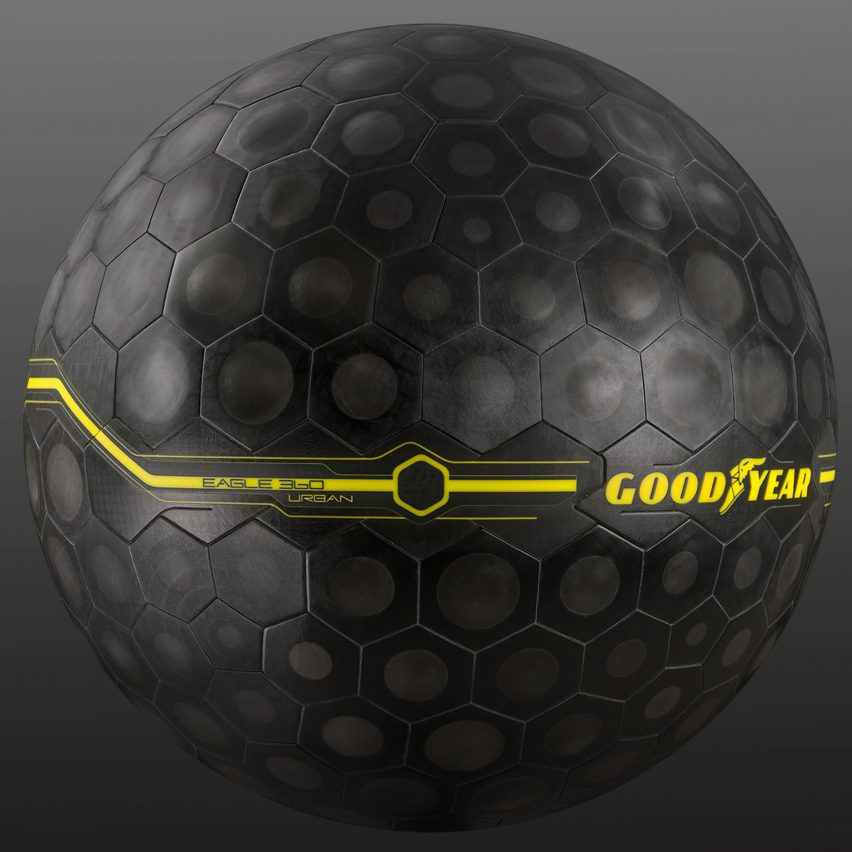
Eagle 360 Urban tyre by Goodyear
At last year's Geneva Motor Show, Goodyear presented a 3D-printed spherical concept tyre for driverless cars that is designed to become part of the vehicle's "nervous system."
Powered by artificial intelligence, the Eagle 360 Urban tyre is covered in a "bionic skin" of sensors made from super-elastic polymer, which enables it to sense driving conditions, including terrain and weather, before feeding it back to the AI system to adapt itself accordingly.
The tyre is also able to connect with other vehicles, as well as infrastructure, traffic and mobility management systems, to register information on its real-time surroundings.
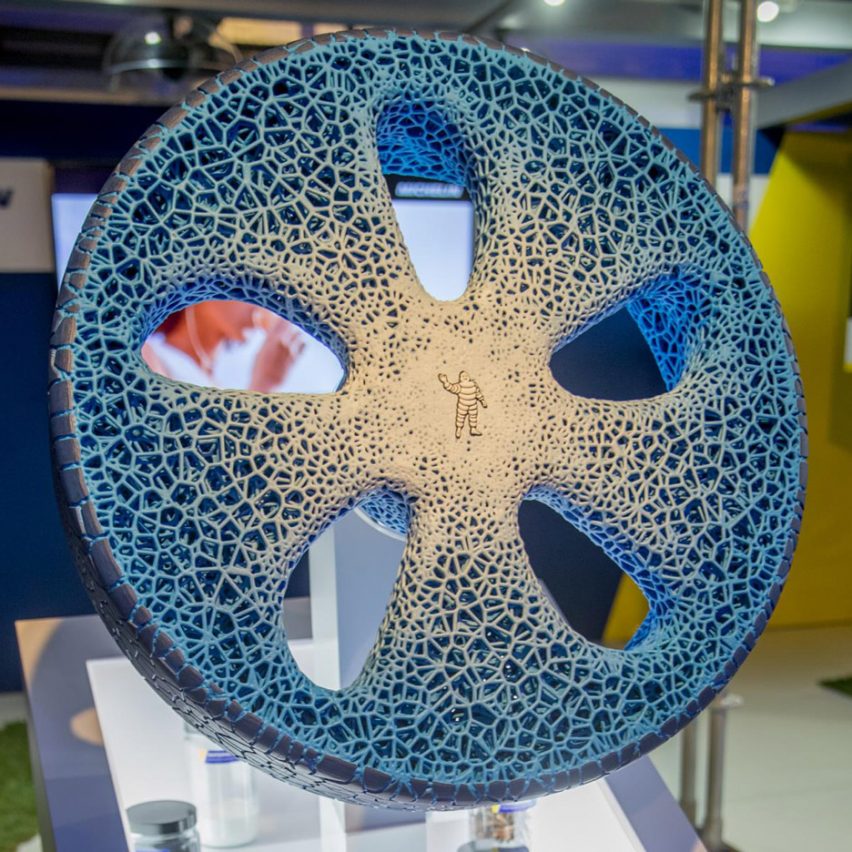
Vision concept tyre by Michelin
French tyre manufacturer Michelin released a concept for a 3D-printed tyre that is airless, puncture-free, connected, rechargeable and customisable at the 2017 World Summit on Sustainable Mobility.
Made using biodegradable materials, the Vision concept tyre doesn't rely on air, but on an interior architecture that is able to support the vehicle's weight – also making it impossible for the wheel to puncture or explode.
The tyre is also equipped with sensors that provide real-time information about its condition, and an accompanying app allows the user to change the tire’s destination when needed.
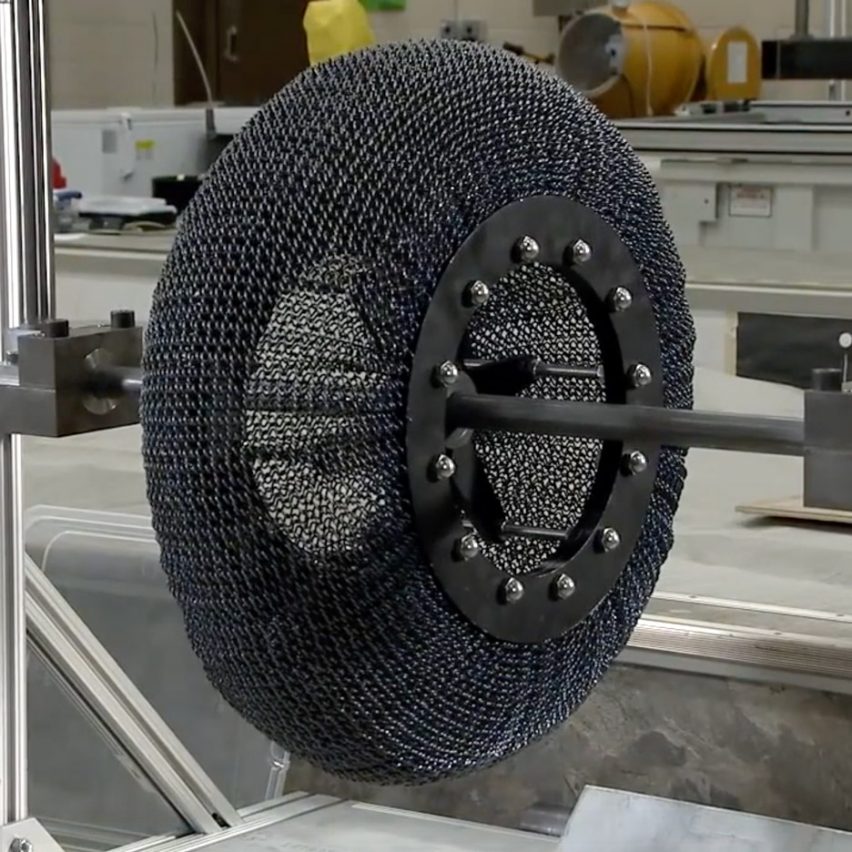
Superelastic Tyre by NASA
Inspired by the Apollo lunar tyres, NASA's non-pneumatic Superelastic tyre was initially developed for future missions to Mars, but can also be seen as an alternative to our ordinary air-filled tyres.
Developed by NASA's Glenn Research Centre and Goodyear, the Superelastic tyre is composed of shape memory alloys that can withstand high strain and excessive deformation without permanent damage.
This use of material also eliminates the possibility of puncture failures, resulting in optimal automobile safety.
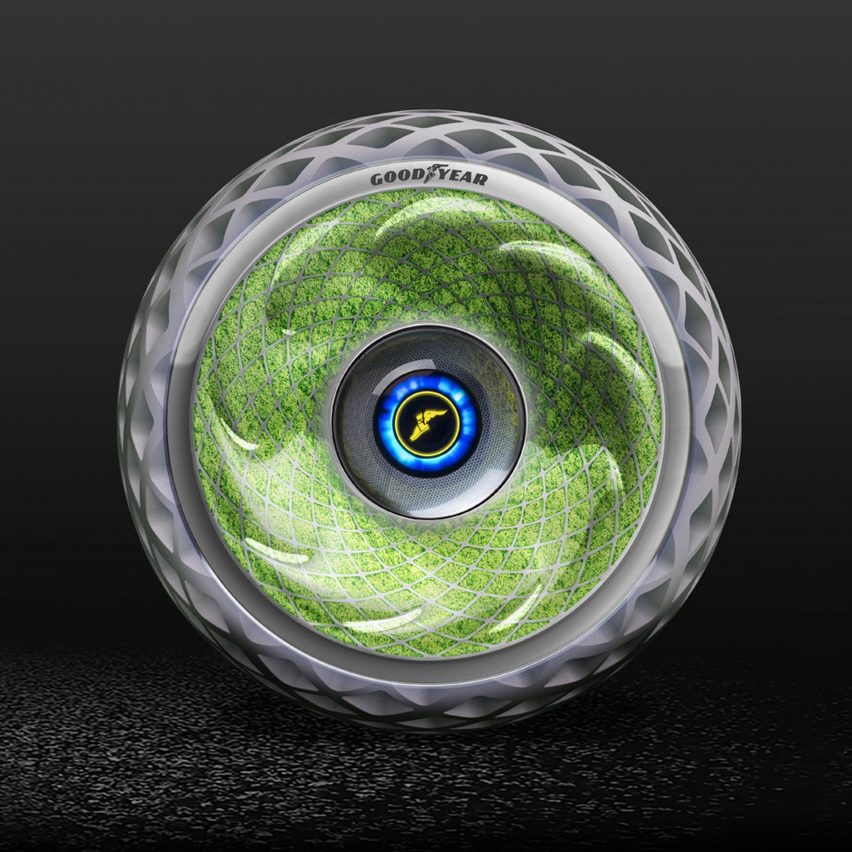
Goodyear unveiled a 3D-printed concept wheel at this year's Geneva Motor Show, which is filled with living moss that absorbs moisture from the road, before converting it into oxygen through photosynthesis.
Oxygene was conceived as a response to research revealing the impact of unsafe air quality levels in urban areas.
The wheel generates electricity by converting carbon dioxide into oxygen, which then also powers its electronic features such as an artificial intelligence processing unit and sensors.
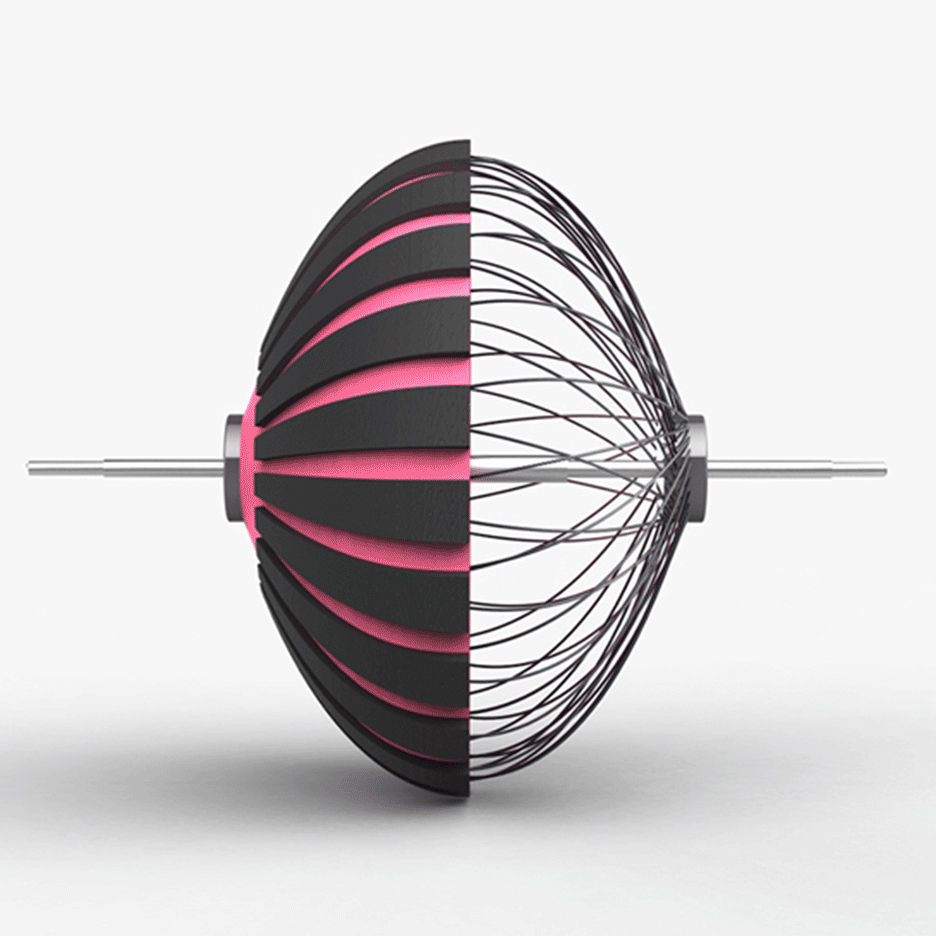
Roadless wheels by Ackeem Ngwenya
Royal College of Art graduate Ackeem Ngwenya designed a set of all-terrain wheels to help farmers in rural Africa carry heavier loads to market, to replace the traditional method of "head-carrying", which sees women and children carry heavy loads to market on their heads and backs.
Ngwenya uses stainless steel components to form a flexible cage wheel, which is able to expand and contract using a level to crank a central shaft with a mechanism similar to a scissor jack – the device used to raise cars for minor repair work.
The wheels are designed to be mounted on an axle so they can be used on tricycles, trailers, wheelbarrows and light motorised vehicles.
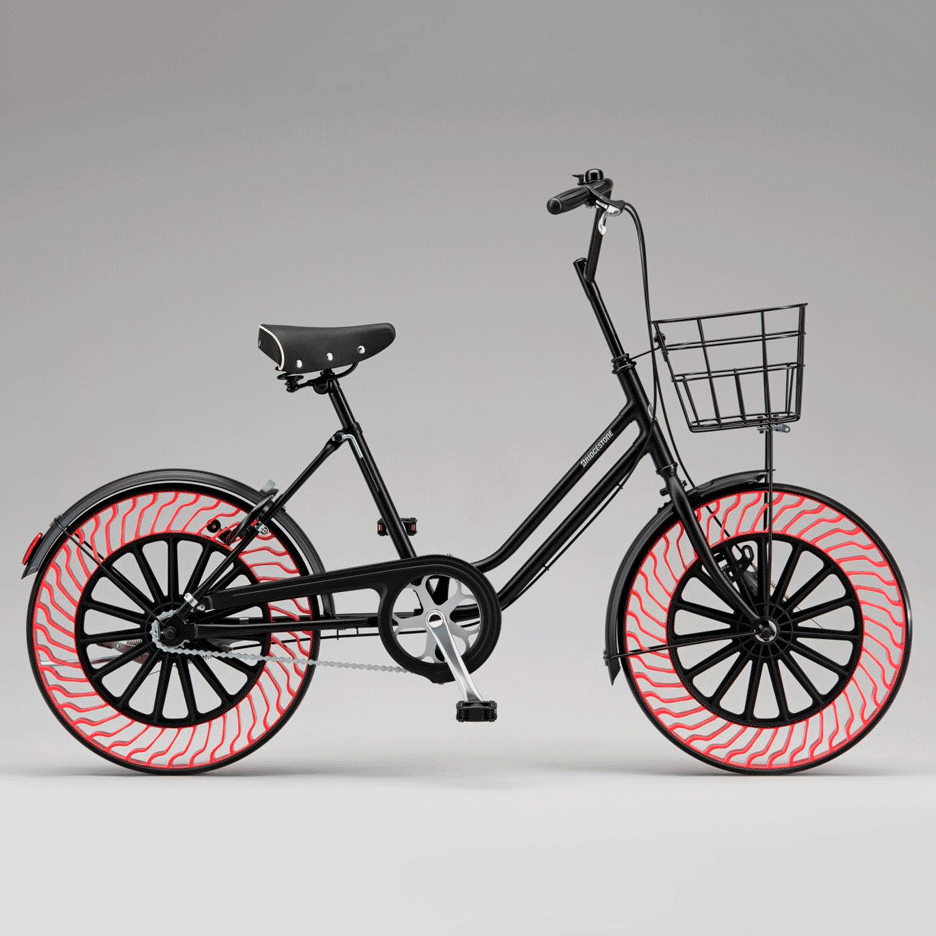
Air-free bicycle tyre by Bridgestone
Tokyo-based tyre company Bridgestone designed an air-free, puncture-free bicycle wheel, which uses a structure of spokes that stretch along the inner sides of tyres to support the user's weight.
The tyres are made from thermoplastic resin, which is fully recyclable. Bridgestone hopes to make the new tyre available to buy by 2019.